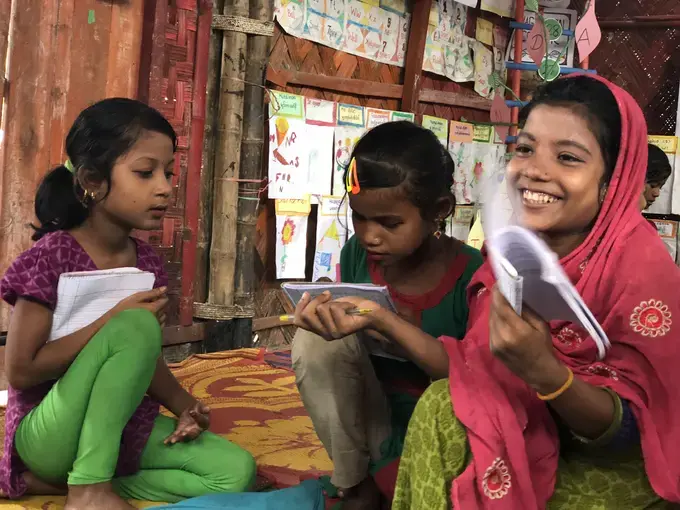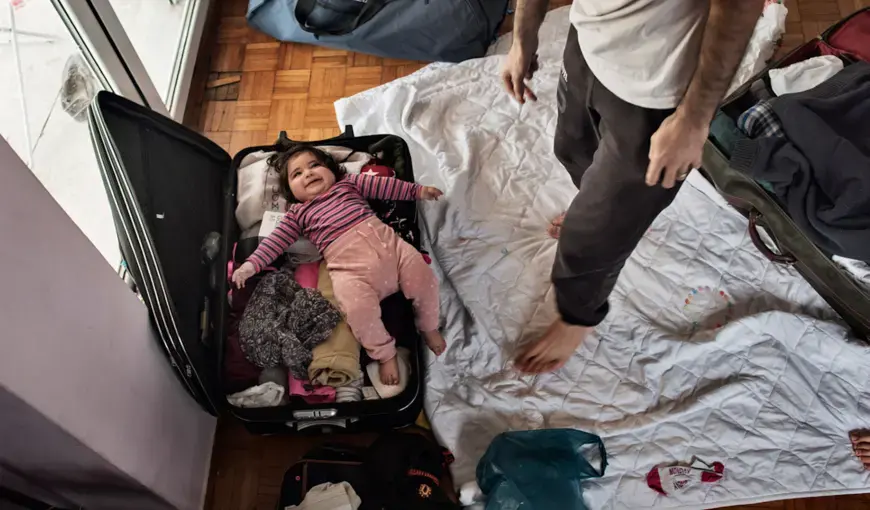Lesson Plan July 16, 2019
Toolkit for Your Next Discussion on Migration and Refugees
Grades:
Essential Questions
Glossary: Helpful terms related to migration
Ten Under-reported Stories on Migration and Refugees
Lesson Plans & Extension Activities: Supplementary lesson plans that assist in the analysis and understanding of the stories above on migration and refugees.
1. Learning About Literary Journalism: School in Kenyan Refugee Camps
2. What Is Home? Explorations Through Photography
3. Deportation and the Cycle of Violence in El Salvador
4. Enrichment Activities: Resource page that provides more activities, from research to art to service projects, which support further understanding of migration and refugees.

Introducing this Guide:
Migration and the U.S.-Mexico border have been much on many of our minds and in the news this year. What stories do we see, and which ones do we miss? These stories go beyond the headlines to explore under-reported stories on migration and refugees in the United States and around the world.
This guide introduces multimedia resources full of in-depth reporting and first-hand accounts of the stories of immigrants and refugees from all over the world. What kind of dialogues will come from the understanding that migration occurs around the world, and for many different reasons? What part do immigrants play in the cultural understandings that formulate our social landscape?
Designed to support you in carrying these stories into the classroom, this guide includes essential questions, vocabulary, appropriate grade levels, and related lesson plans for the stories that follow.
Essential Questions:
- Why do people leave their home countries?
- What are the differences and similarities between the experience of asylum seekers and immigrants?
- What are some of the obstacles that migrants face when moving to another country?
- What challenges do migrants face once they have settled in another country?
- What obligations do you think societies have to migrants, and why? What do those obligations look like?
Ten Under-reported Stories on Migration and Refugees:
1. Deported U.S. Veterans Feel Abandoned by the Country They Defended
Since the early 20th century, a national discussion on the treatment of veterans has taken place. However, have you ever heard about the treatment of noncitizen service people? Many undocumented immigrants who have gone to war in the U.S. military have been deported after returning home. these are their stories.
Appropriate for: Middle school, High school, University

2. Honduran Migrants Deported from the U.S. Often Face a Grim Fate
Many people in the U.S. assume that the majority of people crossing the U.S.-Mexico border come from Mexico. In reality, migrants come to the U.S. from all over Central America. Many asylum-seekers flee their countries due to gang violence. In this video, a young man fleeing gang violence in Honduras relates his struggle to seek asylum in the U.S.
Appropriate for: High school, University
3. 'We're Going to Find You.' Mexican Cartels Turn Social Media Into Tools for Extortion, Threats, and Violence
What if the deadliest weapon weren't a gun, but an iPhone? With the rise of social media use, cartels in Mexico have started using anonymous Facebook and WhatsApp accounts to extort and terrorize their communities, further increasing the number of asylum seekers at the U.S. border.
Appropriate for: High school, University

4. The Saudi Government's Global Campaign to Silence Its Critics
People seek asylum for many reasons, including identity-based discrimination, economic hardship, domestic violence, and oppressive cultural paradigms. This reporting describes the experience of young women from Saudi Arabia fleeing from her family and conservative husband to find freedom in another country. Speaking critically about the country she comes from, she faces many disturbing repercussions of speaking out against an inflexible system.
Appropriate for: High school, University

5. Japan Needs Immigrants, But Do Immigrants Need Japan?
With xenophobic rethoric on the rise, many countries around the world have made it clear that they are unwilling to accodomate the mass migration movements that have occurred in the past 5-10 years. Japan takes an atypical stance on this issue: with an aging population, they need more immigrants, and are incentivizing them to come work and live in Japan. Their aging population places them in a position to incentivise non-Japanese workers to re-balance their work force. Read the following story to access the struggles and successes of this endeavor.
Appropriate for: Middle school, High school, University

6. A Brutal Life for Migrants in Libya: Trafficking, Detention, or Death En Route to Europe
Libya has long struggled with intrastate stability. Its shores are used as a gateway for many people migrating to Europe from Subsaharan Africa, as well as Libyans facing widespread violence; for many people, it has become a place of waiting for the opportunity to leave for better prospects. The government has prevented most foreign journalists from entering the country, but a Pulitzer Center grantee was able to get an uncommon look at the abuse within the detention centers.
Appropriate for: High school, University
7. A Safe Place to Learn and Grow for Rohingya Refugees
For over a decade, the Rohingya people of Myanmar have faced genocide and ethnic cleansing at the hands of the country's military, causing a mass exodus of refugees fleeing to neighboring Bangladesh. The journey is arduous, the camps are overcrowded, and most refugees suffer from trauma and grief. However, there is also enormous resilience. In this story, you will learn not only about the Rohingya crisis, but also about the schools founded in the refugee camps and the children who study there.
Appropriate for: Elementary school, Middle school

8. Why New Zealand Is Furious About Australia's Deportations Policy
In many countries, deportation takes place on a legal basis. Migrants may be deported due to a lack of citizen documentation, invalid work papers, or other infractions. In Australia, there has been a sharp increase in the number of deportations over the last several years. The majority of deportees are from New Zealand and other Pacific Islander countries on the grounds that their "character" causes a threat to Australia—despite the countries' historically friendly relations. This story explores the experiences of migrants and shifting dynamics in the Australasian region.
Appropriate for: Middle school, High school, University

9. Baby Heln's First Year: A Year in the Life of a Refugee in Europe
The Syrian refugee crisis, resulting from the country's lengthy civil war, can seem too huge to grasp. Grounded in personal narrative, these journalists followed one family from the birth of their child, Heln, through the first year of her life. Follow them as they pursue asylum in Greece, Germany, and Estonia in this powerful multimedia interactive.
Appropriate for: Elementary school, Middle school, High school, University

10. 2,300 Miles to Work
Many young people from Tajikistan are faced with a difficult decision: finding work or being with their families. With almost no industry left in the country, workers travel many days to find work in Russia, sending money home as the only income that a household often has. This short documentary explores economic migration and the people whose lives are shaped by it through watercolor paintings and film.
Appropriate for: Middle school, High school, University
Lesson Plans and Extension Activities:
1. Learning About Literary Journalism: School in Kenyan Refugee Camps
For elementary learners: Students explore literary journalism by learning about what life is like for children who live in and got to school at Kakuma refugee camp.
2. What Is Home? Explorations Through Photography
For middle and high school learners: Students explore ideas of "home" in connection to refugees worldwide and homelessness locally by analyzing images and text and creating their own photo stories that reflect their communities.
3. Deportation and the Cycle of Violence in El Salvador
For middle and high school learners: This lesson asks students to examine Salvadoran gang violence in the U.S. and El Salvador, evaluating the role deportation plays in stoking violence and considering its impact on multiple actors.
Bonus! Enrichment Activities for Refugee Reporting
For all learners: This resource provides suggestions for student research, reporting, arts activities, and community service related to migration and refugees.
REPORTING FEATURED IN THIS LESSON PLAN
-
 English
EnglishTopic
Migration and Refugees
The Pulitzer Center supports journalism that explores the various factors—including climate...
March 17, 2011

